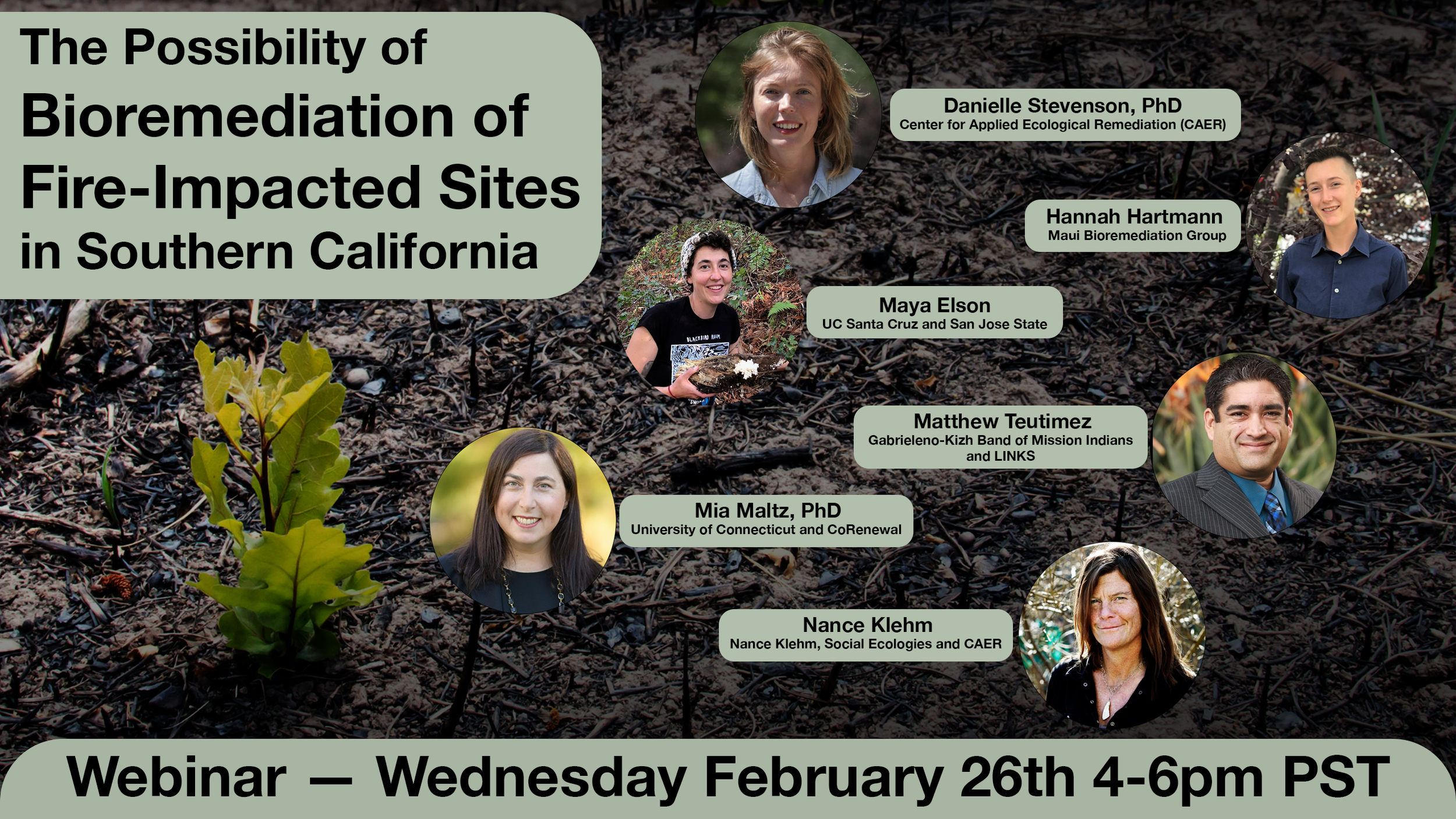Bioremediation for Fire-Impacted Sites in Southern California: Restoring Land and Water After Wildfires
Southern California’s wildfires have left a lasting mark on the land. Beyond the immediate devastation, post-fire landscapes face ongoing threats such as erosion, toxic contamination, and debris flow—all of which can severely impact soil, water, and public health.
In the aftermath, many are asking: What can be done to restore these damaged environments and prevent further harm?
There is potential for bioremediation—harnessing the power of fungi, microbes, and plants to stabilize soil, break down pollutants, and support post-fire ecological recovery. This nature-based approach offers a regenerative complement to post-fire debris removal to fire-impacted areas, addressing both short-term hazards and long-term ecosystem resilience.
How Bioremediation Can Help Post-Fire Landscapes
Wildfires don’t just burn vegetation; they can release heavy metals, hydrocarbons, and other toxins into the air, soil, and water. With the protective plant cover gone, rain can wash contaminants into waterways, threatening human and ecological health. Bioremediation strategies offer a path forward for prevention of erosion and runoff, remediation of residual soil contamination and reduction of fuel load using more sustainable methods.
Fungi & Microbes: Mycoremediation (using fungi) and microbial treatments can break down harmful organic pollutants, metabolizing toxins left behind by burned structures and synthetic materials.
Plants & Trees: Phytoremediation techniques—using deep-rooted plants and trees—can stabilize soil, stabilize or extract heavy metals, and prevent landslides.
Soil Regeneration: Biochar, compost, and inoculated mulch can rebuild soil structure, restoring its ability to hold water and support life.
Community Action: Localized remediation efforts empower communities to protect their homes, restore watersheds, and create more fire-resilient landscapes.
Join Us for a Webinar on Fire Recovery Through Bioremediation
To explore these critical post-fire remediation strategies, a panel of leading bioremediation practitioners and post-fire scientists will share their expertise and insights on how we can heal fire-impacted landscapes. This discussion will cover the science behind bioremediation, practical implementation strategies, and case studies from real-world recovery efforts.
📅 Webinar Details
🕒 Date & Time: Wednesday, Feb 26th at 4pm PST
📍 Location: Online Register here
Featured Panelists:
Danielle Stevenson, PhD – Center for Applied Ecological Remediation (CAER) & Corenewal
Hannah Hartmann – Maui Bioremediation Group
Maya Elson – UC Santa Cruz & San Jose State
Matthew Teutimez – Gabrieleno-Kizh Band of Mission Indians & LINKS
Mia Maltz, PhD – University of Connecticut & Corenewal
Nance Klehm – Social Ecologies & CAER
Whether you’re a landowner, community organizer, scientist, or simply someone who wants to help restore fire-affected environments, this webinar will provide actionable knowledge and resources to support post-fire healing.
Join us to learn how nature itself holds the key to recovering from wildfire damage—and how you can be part of the solution.
